
Become a 3D animator for film and games! Get specialized training to fast-track your career with CG Spectrum’s online 3D animation courses. Learn directly from expert animators working on hit films and best-selling games. Find out more.
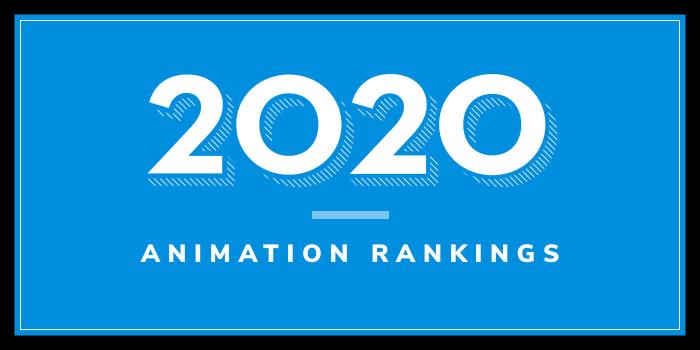
| Ranking | School | City |
|---|---|---|
| 1 | School of Visual Arts | New York |
| 2 | New York University | New York |
| 3 | Rochester Institute of Technology | Rochester |
| 4 | Pratt Institute | Brooklyn |
| 5 | Rensselaer Polytechnic Institute | Troy |
| 6 | The New School’s Parsons School of Design | New York |
| 7 | Syracuse University | Syracuse |
| 8 | Alfred State College | Alfred |
| 9 | New York Institute of Technology | New York |
| 10 | Queens College | Queens |
Our 2020 ranking of the top animation school programs in New York. For an explanation of the ranking criteria, click here.
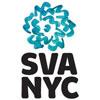
The School of Visual Arts (SVA) was founded in 1947 as Cartoonists and Illustrators School. The school serves more than 3,700 students enrolled in over 30 programs. With nearly 400 students, 50 faculty and 40 courses Animation is the largest program at SVA. Students have a range of degree options to choose from including BFA degrees in Animation, Computer Art, Computer Animation and Visual Effects, and Cartooning. An MFA in Computer Art (Focus Animation, Motion Graphics or Fine Art) is also available as well as Continuing Education (CE) Animation courses.
The school says all animation students “learn the fundamentals of drawing, storytelling, character development, and professional animation software, as well as the history of animation, all for the purpose of bringing their creations to life.” The curriculum “covers the entire spectrum of animation professions, from traditional animation to stop motion to digital; and access to faculty- and alumni-operated studios provides numerous opportunities for hands-on learning, internships and employment.”
Students have studied and worked at studios such as Titmouse, Augenblick Studios, and Plympton, as well as numerous independent animation studios across New York. SVA animation graduates have gone on to work at major studios such as Blue Sky Studios, Disney Animation Studios, DreamWorks Animation, Lucasfilm Animation, Nickelodeon, Sony Pictures Animation, Warner Bros. Animation, and independent animation studios across the globe.
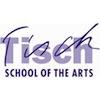
Serving more than 60,500 students, New York University (NYU) is the largest private university in the U.S. Founded in 1831, the school also has the highest number of international students in America with degree-granting campuses in New York, Abu Dhabi, and Shanghai. NYU operates 11 global academic centers and research programs in more than 25 countries. With more than 19,000 employees, NYU is also one New York’s largest employers.
Founded in 1965, Tisch School of the Arts is part of NYU. The school houses the Maurice Kanbar Institute of Film and Television, home of the Department of Animation and Digital Arts. The Institute offers a BFA in Film and Television with an Animation Core in Production and an MFA in Animation and New Media. The two-year MFA program is also offered at Tisch Asia.
The Animation Area of the Kanbar Institute of Undergraduate Film & Television at NYU Tisch School of the Arts began in 1979. The program had just three classes: Art & Design, Animation I, and Animation II. For the 1980-1981 academic year, the program was home to 80 students enrolled in five classes. In 2013, the program enrolled 461 students. Today, the program serves hundreds of students from 48 states and 39 countries.
The school says that the Animation Area at NYU Tisch “serves the needs of all Film and TV students for both animation and live-action projects.” The current curriculum “is varied and integrated with both traditional animation and 2D and 3D animation courses at fundamentals, intermediate and advanced levels, as well as storyboarding, titles, optical and digital effects, life drawing and history and criticism classes.” Nearly 20 courses are offered as part of the program. Highlights include Action Analysis, Animation: From Pitching to Pipeline to Production, Drawing and Design for Animation, Experimental Animation, Life Drawing: Anatomy, Motion Design & Titles, Special Topics in 3D Computer Animation, Stop Motion Animation, Storyboarding, Visual Effects and Compositing, and Writing for Animation.
Other program highlights include internship opportunities, study abroad experiences, and guest speakers. Past guests have included Frank Thomas, Chuck Jones, Jeffrey Katzenberg, Roy E. Disney, George Griffin, David Polonski, Ed Catmull, Amid Amidi, and Willis Pyle, among others.
Graduates of the Animation program at Tisch have landed jobs at Pixar, DreamWorks, Walt Disney Animation Studios and many others.

Rochester Institute of Technology (RIT) was born of an unlikely institutional marriage of an influential cultural association, the Rochester Athenaeum (est. 1829), and a technical training school, the Mechanics Institute (est. 1885). The Institute adopted the name Rochester Institute of Technology in 1944 and awarded its first bachelor of science degree in 1955.
Today, RIT serves more than 19,000 students majoring in everything from Art and Design to Urban Community Studies. RIT’s College of Imaging Arts and Sciences (CIAS) is home to the nation’s first PhD in Imaging Science and the School of Film and Animation (SOFA). SOFA offers BFA and MFA degrees in Film and Animation.
The BFA in Film and Animation is one of the most selective majors at RIT. “All undergraduates share the same first semester, where they immediately begin production in both film and animation, ensuring each student is exposed to each form. “This also gives BFA students time to explore before deciding which to pursue,” says the school. Three options are available: 2D Animation, 3D Animation, and Stop Motion.
The 2D Animation Option “begins with character design and progresses through dynamics and sequences. Hand drawing on paper or acetate, using a traditional layering technique, or creating elements originally in 2D software applications are the common options. Then shooting on a crane, bulk scanning the drawings into a computer or animating directly in a software application are the usual production techniques.”
The 3D Animation Option covers all aspects of computer animation. “Modeling in Polygons, NURBs and Subdivision surfaces is taught with an emphasis placed on the need to strike a balance between heavy detail and economy of animation. Other areas covered include, character rigging, set construction, dynamics, character animation, particles, and compositing.
Stop Motion “takes student through all aspects involved in creating stop motion films. Students are taught animating technique, wire armature construction and set construction.”
The Film and Animation MFA is a three-year program “designed to educate complete filmmakers.” Students will “learn the artistic, narrative, technical, historical, and business aspects” of whatever form they choose during the first two years, and then create a thesis project in the third year that can be completed on or off campus. Like BFA students, MFA Animation students will concentrate in either 2D, 3D, or Stop Motion, “but be able to explore the other types of animation.”
The MFA is a terminal degree that prepares students for professional careers in the industry or “teach filmmaking in other higher education programs of merit.” Top careers for MFA graduates include Director, Documentary Filmmaker, Experimental Artist, Producer, and Visual Effects Supervisor. Top careers for BFA graduates include Character Animator, Effects Animator, 3D Modeling and Character Designer, Art Director, and Experimental Film Artist.
Graduates of RIT’s BFA and MFA Film and Animation programs have landed positions at top studios such as Disney Animation Studios, Electronic Arts, DreamWorks, Blue Sky Studios, Nickelodeon, Lucasfilm, Industrial Light and Magic, Paramount, HBO, Rhythm and Hues Studios, and many others.

Founded in 1887, Pratt institute serves more than 4,800 students enrolled in over 25 undergraduate degree programs and concentrations and more than 26 graduate degree programs in its Schools of Art, Design, Architecture, Liberal Arts and Sciences, and Information. The Pratt Institute School of Art offers a BFA in Digital Arts and Animation with an Emphasis in Digital Animation and Motion Arts or Interactive Arts. Concentrations include 2D Animation, 3D Animation and Motion Arts, and Interactive Arts. An MFA in Digital Animation and Motion Arts is also available.
The school says students in the BFA programs will “develop aesthetic finesse, technological skill, conceptual sophistication related to digital media, and thorough comprehension of the potential of art and technology.” Students also learn to create professional documentation and presentation. Graduates of the program “demonstrate an expertise in their discipline, a unique voice in their medium and knowledge of historical works in art and technology.”
Students will create animated films at Myrtle Hall, a LEED Certified Green Building that includes nine state of the art digital studio/classrooms, the Digital Arts Resource Center and Digital Commons flex-space, a High Speed Fibre Channel Network, and Traditional Animation Facilities. An Audio Recording Studio, a Dedicated Green Screen facility, Graduate Studio spaces, 2D/3D Printers and production facility, and the Mediated Digital Arts Gallery are also housed in the building.
Students in the 60 credit hour MFA in Digital Animation and Motion Arts program will have the opportunity to create narrative and non-narrative films using 2D and 3D digital animation techniques, live action and motion graphics. Electives include Storyboarding and Storytelling, Lighting and Rendering, Motion Dynamics, Compositing and Special Effects, Character Design, Character Animation, Matte Painting, and more. Students will complete one year of work on a thesis, which culminates in an exhibition or screening of the completed work and a thesis paper. The MFA in Digital Animation and Motion Arts can be completed in two years.
Pratt School of Art alumni have landed positions at major studios such as Augenblick, Blue Sky, Digital Domain, Cartoon Network Studios, DreamWorks Studios, Curious Pictures, Industrial Light & Magic, Walt Disney Animation Studios, Rhythm and Hues Studios, Walt Disney Animation Studios, Curious Pictures, Gameloft, Sony Imageworks, NBC Universal, Titmouse, and many others.

Established in 1824, Rensselaer Polytechnic Institute (RPI) serves nearly 8,000 students enrolled in more 100 degree programs through five schools. The School of Humanities, Arts, and Social Sciences (HASS) houses the Department of Art, which offers BS, MFA, and PhD degrees in Electronic Arts (EART).
The school says undergraduate students in the Arts have the opportunity to express themselves with a variety of media from fine art and music to experimental video and animation. Students will select from several concentrations within the BS EART degree to suit their interests. Options include Visual Arts & Animation, Computer Music & Sound Art, Video and Emerging Media, and Art, Technology & Culture.
The Department of Art is a partner in several other cutting-edge majors at Rensselaer, such as Information Technology and Games and Simulation Arts and Sciences. Even if the student is not an arts major, they can still exercise their creativity with one of the schools arts minor programs.
The school says that the BS in EARTS degree is designed to support either a single or dual major option. It is intended for students who want to critically and creatively explore the arts at the intersection of the humanities, and the physical, computational, engineering, and social sciences.
The MFA in EARTS, which is being redesigned, is for students pursuing artistic and academic careers emphasizing electronic media. The 60 credit hour program allows students to create independent works such as multimedia presentations, computer-generated or mediated images, videotapes and installations, performance art, and musical compositions and performances. Graduates of the BS and MFA programs are prepared to seek positions in animation, multimedia arts, design, research, and more.
The school says that the PhD in EARTS was established in 2007 to “fulfill increasing demands for a practice-based interdisciplinary arts doctoral degree within academe [the university], as well as to appeal to students who wish to pursue innovative research that integrates diverse media, performance, science-based and/or social practices, and curatorial studies into their artwork.”
The core of the curriculum focuses on the student's creative practice, which is informed by coursework, individual attention from advisors, and culminates in a dissertation that is composed of the dissertation text and practice-based work. Graduates are prepared for academic positions in research-intensive fine arts settings, as well as visual culture, musicology/sound studies, cultural studies, humanities and media studies programs. They are also prepared for careers as artists, composers, curators, and administrators in galleries, museums, performing arts organizations, artist-run centers, and art-science programs and projects.

The New School was founded in 1896 by American Impressionist William Merritt Chase. Back then, the school was known as The Chase School, and later as New York School of Fine and Applied Art. Today, known as The New School/Parsons, this art and design college serves nearly 6,000 students enrolled in 130 degree and diploma programs across five schools including the School of Art and Design History and Theory, School of Art Media and Technology, School of Constructed Environments, School of Design Strategies, and the School of Fashion.
Program options for animators are offered through the School of Art, Media, and Technology (AMT) and include BFA and MFA degrees in Design & Technology. Pathways include Creative Technology and Game Design. Minors in Immersive Storytelling and Comics and Graphic Nature are also available, as well as a related program—the BFA in Art, Media, and Technology, offered at the Parsons Paris Campus.
According to Parson’s, the BFA Creative Technology pathway “focuses on methods of combining physical computing, creative coding, user experience, responsive environment, and immersion technology for innovative design solutions.” The Game Design pathway “emphasizes the aesthetic aspects of designing games.” It provides a set of tools that grows along with students’ skills and provides them with an understanding of the game design process, from brainstorming to game publication.
Students in the program will visit industry leaders like the Rockwell Interaction Lab, Eyebeam Art and Technology Center, MTV, Nickelodeon, and Curious Pictures. Other industry partners include Apple, Atari, Human Rights Watch, MTV, Siemens, and UNESCO. Students also have access to the university’s extensive libraries, galleries, and state-of-the-art facilities that help students engage their creativity and enable them to showcase their work.
Graduates leave the program prepared for careers in advertising, animation, film, game design, graphic arts, hardware engineering, motion graphics, software design, and virtual reality and immersion experience design.
The full-residency, two-year MFA program is studio based with areas of practice including interaction design, physical computing, game design, new media art, digital fabrication, data visualization, and critical design. In Collaboration Studio courses, students work on real-world projects with industry firms and nonprofits. Past partners include Red Bull, Intel, Apple, Eyebeam, gameLab, Human Rights Watch, Mozilla, NASA, the Red Cross, Samsung, the Whitney Museum of American Art, and the Metropolitan Museum of Art.
MFA graduates go on to establish careers in mobile and application design, Web, UI and UX design, interaction design, new media art, game design, motion graphics, 2D and 3D animation, and digital filmmaking.
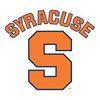
Syracuse University (SU) was founded in 1870. The school serves nearly 22,500 students from across the U.S. and 126 countries. The school offers more 200 majors, 100 minors, and 200 advanced degree programs across 13 schools and colleges. The College of Visual and Performing Arts (VPA), Department of Transmedia offers several programs for aspiring animators. Offerings include a BFA in Computer Art and Animation, an MFA in Computer Art, and a Minor in Animation.
The 120 credit hour BFA in Computer Art and Animation “explores the possibilities of digital media within a fine art, exploratory, and culturally aware setting,” says the school. The degree program provides instruction in multiple art media where the computer plays the primary role. These media include computer-generated images, 3D computer animation, physical computing, creative computer programming, computer gaming, computer music, and sonic art. Students are mentored to become highly skilled critical thinkers producing art in individual and collaborative contexts.
The 60 credit hour MFA program “is an artistic research and development program situated in the context of technology where students are encouraged to develop a diverse set of practices within computer art.” The program covers computer generated imagery, 3D computer animation, physical computing, creative computer programming, computer gaming, computer music, visual effects, multi-channel installation, and sonic art.
Students in the program “are expected to develop a strong record of professional practice in a variety of contexts, including exhibition, screenings, public intervention, installation, performance, workshops, gaming events, and viral media, among other forms of public engagement.” Students can expect to complete the MFA program in three years.
Students in both the BFA and MFA programs have access to study abroad programs in 60 countries throughout the world, enabling them “to gain a global perspective as they pursue their studies.”
VPA animation graduates have found employment at major studios such as Pixar, Rhythm and Hues, Industrial Light and Magic, LucasArts, Blizzard Entertainment, Tippett Studios, Moving Picture Company, and Sony Pictures Imageworks. Graduates have also presented their work at galleries and media art festivals around the world.
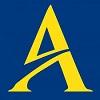
Founded in 1908, Alfred State College is part of the State University of New York (SUNY) system. The school serves nearly 3,700 undergraduates enrolled in more than 70 majors in agriculture, allied health, applied technology, architecture & engineering technology, business, and liberal arts and sciences at the baccalaureate, associate and certificate levels. Programs are offered through a number of colleges and departments, including Alfred State College of Technology, Department of Digital Media & Animation.
Here, students can earn an AAS or BS in Digital Media and Animation. The 63 credit hour, four-semester AAS program provides students “with a broad range of technical, creative, and problem-solving skills,” says the school, “to facilitate employment in new media and animation.”
“At the core of the program is a sequence of studio courses that enhances individual artistic creativity and provides instruction in the traditional arts and industry-standard computer graphics software.” Course highlights include Digital Foundations, Interactive Design, Intermediate 3D Animation, Production, Foundations: Form/Space Relationship, Figure and Motion, and Survey of Animation & Visual Effects.
Graduates of the AAS program are prepared to enter the field in a range of areas including animation, fine art, digital imaging, interactive design, media design and more. They may also enter directly into the Digital Media and Animation BS, the Interdisciplinary Studies BTech, or the Technology Management BBA degree program.
The program has an employment and continuing education rate of 100% – 33 percent are employed; 67 percent continued their education.
The Digital Media and Animation BS requires around 123 credit hours of study, including a Senior Seminar, Senior Studio Project, Portfolio Courses, and Studio Tokyo. Studio Tokyo provides the opportunity for students to explore Japanese art, cinema, animation and digital media through a study-abroad program based in Tokyo. Students will create animation and digital media projects in collaboration with local artists, and expand upon their research from the Japanese Media course through screenings and site visits.
A Digital Media & Animation Internship is also part of the program. The course provides students with practical application of skills in the Digital Media and Animation major. The internship provides valuable real-life experience while extending the skills of the student towards various businesses, organizations, and professionals.
Graduates of the program are prepared to seek positions in animation, digital imaging, fine art, interactive media, media design, and many other areas. The program has a 100% employment and continuing education rate, meaning 100% of graduates are employed or enrolled in graduate programs.

Founded in 1955, New York Institute of Technology (NYIT) serves 9,000 students representing nearly all 50 states and 100 countries. The school offers more than 90 technology-infused undergraduate, graduate, and professional programs in disciplines ranging from architecture and design to the STEM fields. Programs for aspiring animators are offered through the College of Arts & Sciences’ Department of Digital Art and Design, where, the school says, “the founders of Pixar got their start.” Options include a BFA in Digital Arts and an MFA in Digital Art & Design – Animation.
Program highlights include "HIVE," a unique research-studio environment where students creatively explore, innovate, and solve problems using motion capture, gaming, 3-D printing, and state-of-the-art graphics hardware and software and industry connections through internships, workshops, seminars an artist-in-residence program. Students also make connections through juried events such as the annual NYIT Animation Festival.
In addition to the BFA and MFA programs, NYIT offers a special Graphic Design & 3D Animation/Game Design Workshop. Students receive hands-on experience with the latest technologies in state-of-the-art facilities and gain insights into art, design, and technology while exploring techniques of visual communication and producing portfolio-ready artwork.
The program includes exposure to the digital art and design industry through a site visit to a professional design studio in New York City as well as guest critiques from industry professionals, an immersive academic experience of the graphic design and digital arts majors at NYIT’s Department of Digital Art & Design, and one NYIT college credit per week of attendance.
Graduates of the degree programs and those who complete the will leave the programs with a professional portfolio that showcases their best work.

Founded in 1937, Queens College (QC) is part of the City University of New York (CUNY) system. The school, which serves more than 19,000 students from nearly 170 countries, offers bachelor’s and master’s degrees in over 170 areas through four Divisions. The Division of Arts and Humanities consists of 11 departments including the Art Department, which offers a BFA in Design with a Concentration in Animation & Illustration and a 21 credit hour Minor in Design.
Students can "specialize in techniques and approaches that prepare them for a multitude of design-based careers, including graphic designers, software and web developers, animators, marketing and advertising specialists, or product designers," says the school. The program also has an "extensive network of internships that allow students to get real-world experience as a designer while receiving college credit and building their resume."
Course highlights include Digital Animation, Traditional Animation, 3D Modeling, 3D Animation, Illustration, Motion Graphics, Video Graphics and Compositing, Storyboarding and Storytelling, Game Design, Shoot, Edit, Post, Digital Moviemaking, Digital Imaging, Pixel-Based Imagery, and Vector-Based Imagery. Students will also complete a portfolio of their best work.